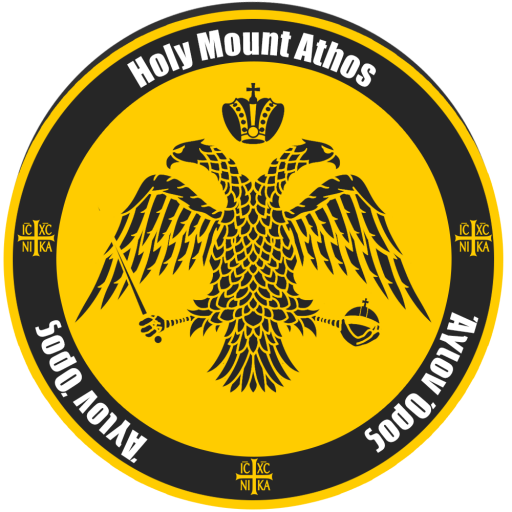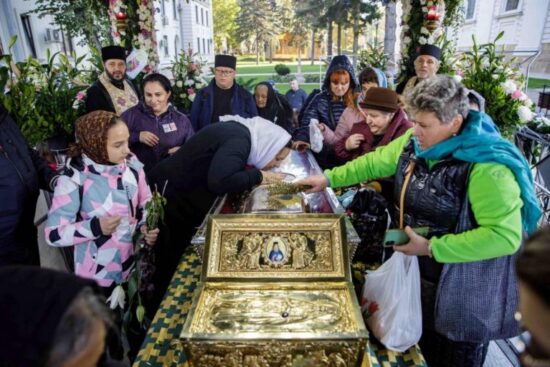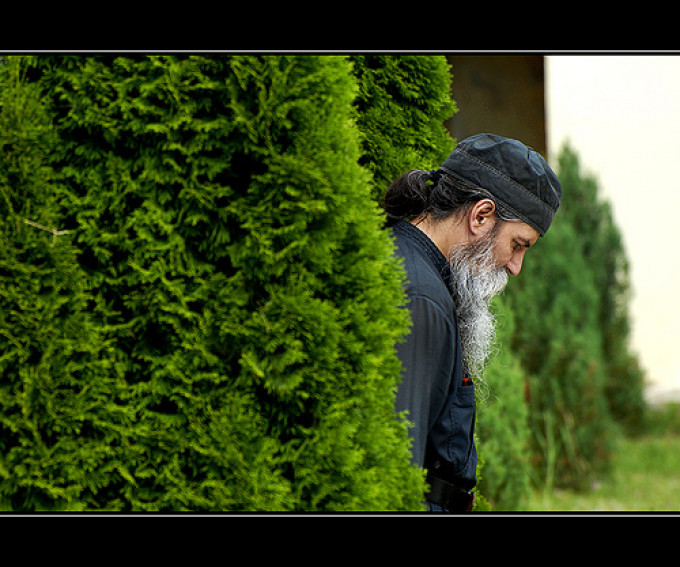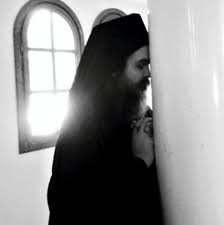The word pilgrim comes from the Latin `peregrinus`, which means a person who makes a long travel by foot to a holy, religious place
Romanians due to their faith are fond of pilgrimages and after 1989 together with the religious freedom this beautiful tradition was renewed especially at the great spiritual feasts from our country, as it is the pilgrimage to Pious Paraskevi from Iasi.
If we have to associate two words with different meanings, pilgrimage and mantle, we will find certain aspects which link one to the other.
For the pilgrim from the old times the mantle was indispensable, this protected him of rain, wind and cold weather and provided him the protection needed to reach the aimed destination safe and sound and spend time at the holy place.
Professor Mitican, based on some chronicles, described the patron saint`s day of saint Paraskevi and how it took place the pilgrimage to Iasi two hundred years ago. The crowds gathered there had no accommodation place and they stayed in town on the roadsides, in ditches and they made fires in some places. The main victuals were bread and cheese and they also received apple wine. Mantle had its very important role in those cold nights of October. In our days we see the Christians waiting in the line for their turn to the pious saint and during night when it is cold or it rains they wear some clothes like mantles.
But over this visible mantle the pilgrim wears the invisible mantles of faith and desire which urge him to go on pilgrimage, of humbleness and humility, of patience, prayer, obedience, communion and mercy, of joy, love and gratitude. But the most important and lightest is the mantle of holiness which we wear with the aid of the Holy Mother of God and of the Saints of God. Under this mantle of the Saints we walk and advance in pilgrimages to the aimed destination, no matter how hard it might seem to us.
The mantle under which we the Romanians are protected we use to say that it is that of the Holy Mother of God that is why we have for her a special veneration.
But especially for us the inhabitants of Iasi town there is also the mantle of our Mother Paraskevi. Although she was young when she reposed, we consider her as a mother for us. We all have mothers by body, but they can`t remain forever beside us, but the Holy Mother of God and the Saints accompany us on all days of our lives, help us and advise us in secret. Without this spiritual mantle we would probably move harder and we would have greater trials.
The pilgrim wears under his mantle in this spiritual ascension all his life, with good and bad things, with its ups and downs, with hopes, accomplishments and failures.
As the pilgrim wishes to be under the mantle of the Saints he also takes under his own mantle those remained at home, his dear ones, those who are in need, who have many difficulties, those who have enmity against us, praying : `Bring us all together God so that we may give glory to You in humbleness.`
There is one more mantle, that of the Church and all our life goes on under this one.
The parish churches, the monastery churches or the worshipping places from other institutions are as many mantles where we gather to commune with the Holy Sacraments and we continue our way in communion on the Path to Salvation.
The actual times bring us new mantles, new churches are built and the old ones are renewed. We have the chance to adorn these new altars and transmit to our followers our desire and faith as well as the spiritual inheritance and example for the future generations.
Christian, dare to wear all these mantles for being covered, for being warmed up and for giving trust to others that they can put on the mantle of faith.
Pr. Constantin Stoian
Source: http://ziarullumina.ro






